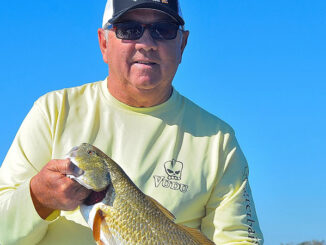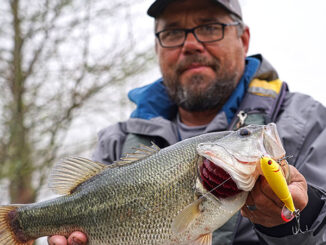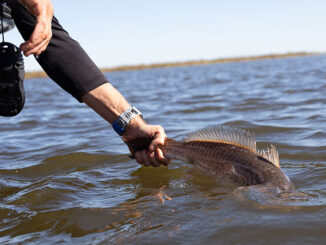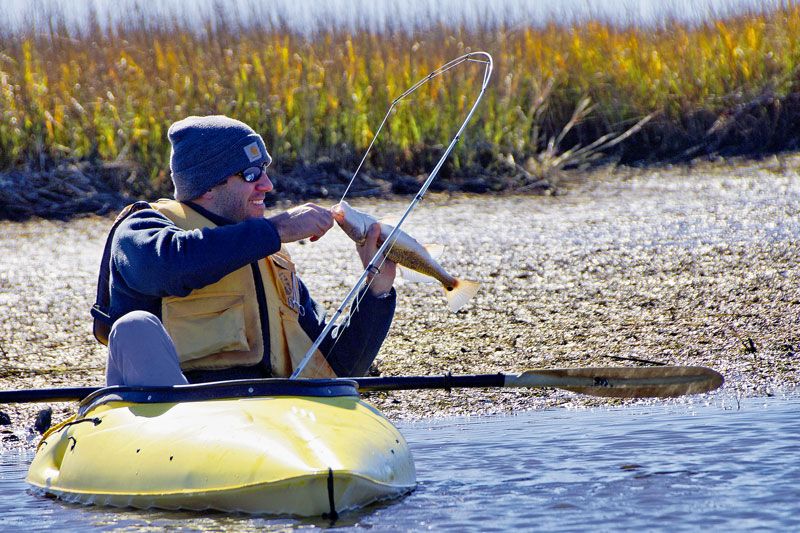
February can be frustrating. Deep, winter doldrums have set in. A bad day of fishing is never bad, but fishing in miserable conditions can sure seem like it. If you’re not insanely mad at the fish, waiting until conditions improve can spell success and a more enjoyable experience. The best advice is to pick your days.
February can be marked by a lot of cold, low and dirty water. Stiff, cold winds can be nearly unbearable when you’re exposed to them in a kayak. However, taking time to learn an area and the different conditions it presents can produce some great cold water fishing.
The fishing may be slower, but it can be predictable. If it swims in the marsh, it will be affected by water temperatures. Although not completely identical, most fish react the same ways to cold-water conditions. The bite will be subtle and slower. They concentrate in deeper water and disperse and move shallower if it warms a bit. If you know where to look, you will find them.
Many of south Louisiana’s marsh areas have access to a mix of shallow lakes, bays and ponds, all interconnected with deep, natural bayous, canals and pipelines. Often, dead-end canals also dot an area. The easy access to varying water depths and food sources keep the fish biting somewhere in the general area throughout the winter.
Even a slight, 2- to 4-degree change in water temperature can move the fish and turn on or off their feeding activities. If you are not having success, don’t leave an area too soon. Although it may appear that there are no fish around, you just might not be in the correct location or using the correct technique. Not catching in the middle of a canal? Try closer to the bank or on a nearby flat. It can be as simple as the fish having moved in accordance with a slight change in conditions. Kayaks aid in this endeavor as they limit the ability to pick up and move far away as you can in a powerboat. Thoroughly fish an area before giving up.
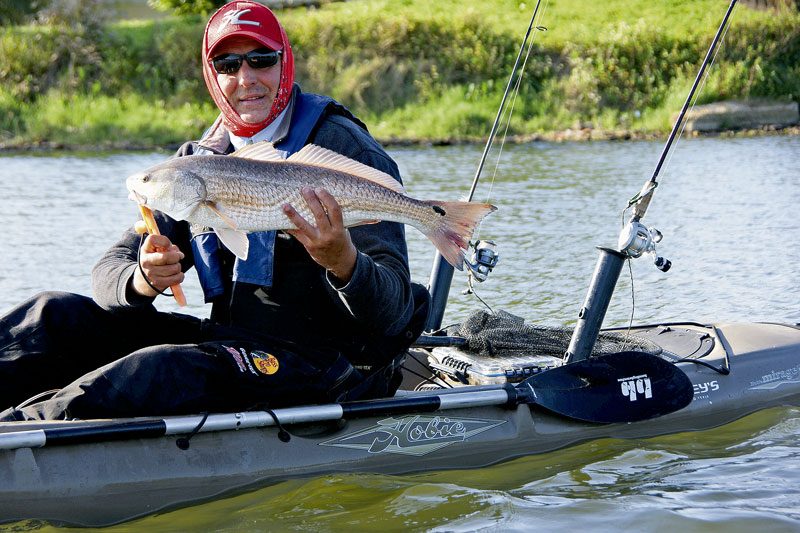
Fishing differing habitats in the same area often leads to success. Learning where the fish are in specific conditions is the key to successful winter fishing. Knowing where they will likely be and how they act under specific weather conditions is the key to successful winter trips. Interpret and adapt to what you are seeing and you will find the fish.
Some trips often provide information that can be stored for future trips. On days after strong cold fronts, when you encounter extremely low water, make note of ditches, drains and certainly any exposed structure such as shells or oyster reefs. You will see the shells along the shallow areas spreading out to deeper waters. Shells are a great key to successful winter fishing. Not only do they radiate heat from the sun, they also filter the water making those areas warmer and clearer. When the water is higher on a subsequent trip, you know right where to cast. Low water also reveals bottom contours and any remaining grass beds.
When the water is extremely low, fish have nowhere to go except into the deeper areas. If fishing canals or bayous, know outside turns offer deeper water, and vice versa for the inside turns. If they are holding deep, set up on the flat and work your lures up from the depths until you locate where they are holding. The recurring key is to fish areas that have a mix of deep and shallow water.
Keep in mind that deep is a relative term. Five feet is not generally considered deep water; however, in a particular area, it may be the deepest water available. Winter fish stage where they have immediate access to both deep and shallow water. They move back and forth with changes in the tide and water temperature. Consistency comes from fishing areas that offer this variety of depths.
Be ready to change up
Varying techniques is also a good strategy. You may catch fish earlier in the day drifting a canal or bayou, but later in the day, as it warms a bit, try switching to a cork. Live shrimp are generally difficult to come by in February, but cocahoe minnows are great for winter fishing, and don’t overlook dead shrimp. Keep lures on hand that can be worked at a variety of speeds and depths. Once you establish what they want and how they want it, you can catch fish after fish, repeating the same pattern.
While trout or reds may be stacked up in the middle of a bayou, often they are cookie cutter-size, with many having to be measured to confirm minimum size. However, larger fish are usually first to move to the shallower water. As the water temperature warms a bit, these bigger fish head to the flats.
In addition to a popping cork, don’t overlook tossing a topwater plug at these larger fish. This is especially effective a couple days after the weather has stabilized and warmed up. While generally thought of as a spring and summer bait, you will be pleasantly surprised at the results of working a topwater plug.
No matter the chosen bait or technique, the winter fishing axiom of slow and slower applies. The fish are lethargic and moving slower. Fast movements pull the bait away before they may be able to react. Read the signs, feel for subtle bites and set the hook whenever something feels different at the end of your line.
There will not be as many good fishing days available in February, but contrary to popular belief, they could be some of the best of the year. Bundle up, pick your days, and read the signs.
